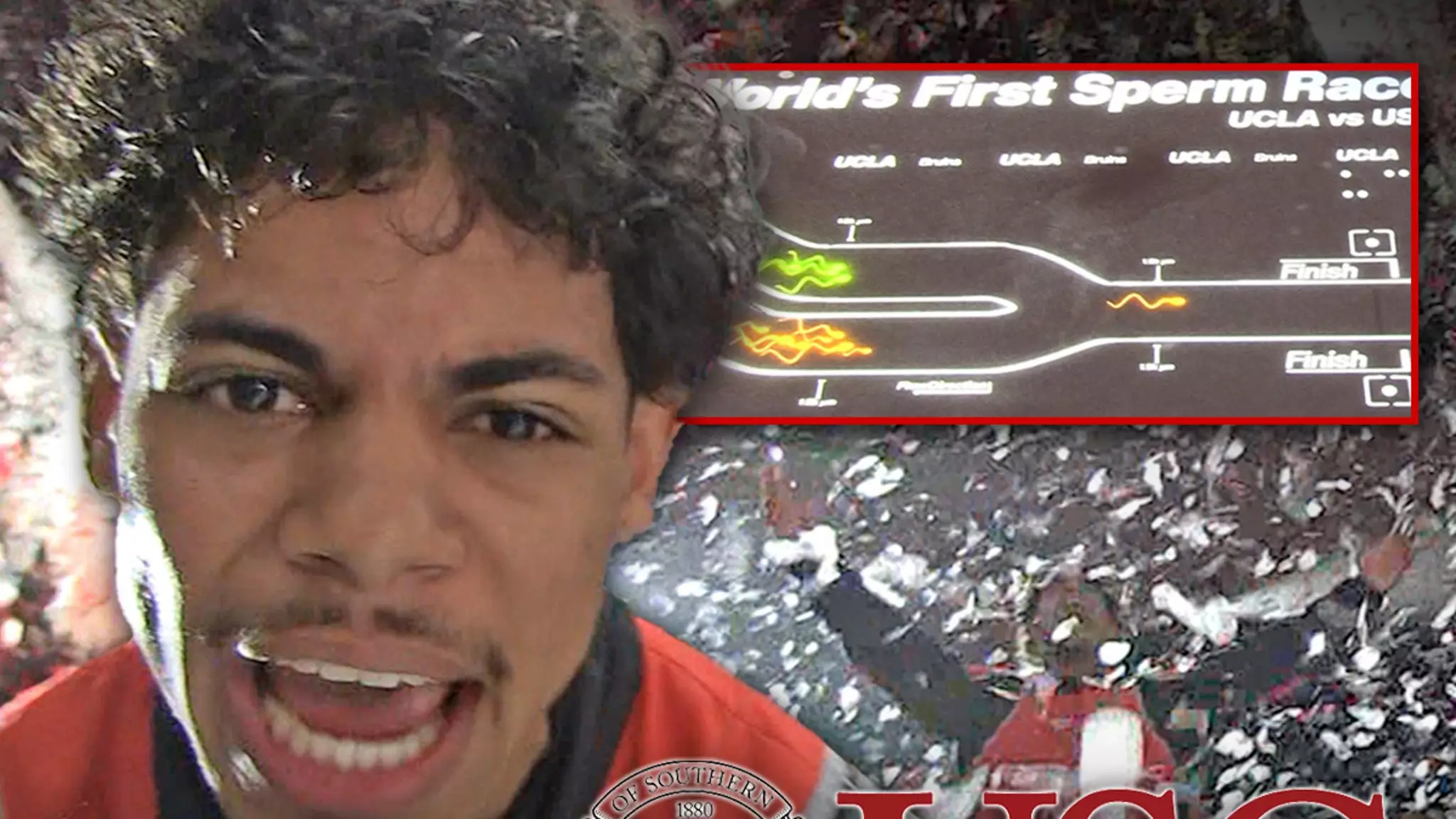In an age where traditional sports often find themselves overshadowed by absurdity, enter the inaugural sperm race, a spectacular—and eyebrow-raising—event that received enough online buzz to make anyone scratch their head in wonder. Organized in downtown Los Angeles, this event was not merely a bizarre spectacle; it aimed to engage a larger conversation about male fertility, and perhaps even poke fun at the serious undertones of such a subject.
The competition saw USC’s Tristan taking on UCLA’s Asher, and while the premise may provoke laughter, it cleverly addresses an urgent public health concern—the alarming decline in male fertility rates. By hosting a whimsical race that captures attention and also initiates dialogue on fertility, the event blurs the lines between humor and seriousness, serving as a magnet for both curiosity and advocacy.
The Race: Thrills, Spills, and Confetti
As the competitors prepared, the atmosphere was charged with both excitement and disbelief. Each contestant stood atop a tube designed to simulate what one can only imagine happens far below our everyday awareness—scientifically or humorously.
The race kicked off with both contenders’ “swimmers” embarking on what could only be described as a journey rife with unpredictability. Initially neck and neck, the competition took a dramatic turn when Tristan’s leading swimmer launched ahead with phenomenal speed. It was a moment reminiscent of classic sporting events, where victory seemed destined to surprise.
Tristan’s eruption of triumph as he claimed victory underscored the event’s playful essence. The chaos that ensued—white confetti raining down and wild celebrations—was emblematic of a community reveling not just in a peculiar competition, but also in shared camaraderie and the overarching message of positivity.
Cultural Commentary: Bringing Awareness through Humor
The involvement of celebrity Ty Dolla $ign, who graced the event with his performance, further added a layer of cultural richness and snugly tied entertainment into this outlandishly clever theme. His song “Carnival” evoked a celebratory atmosphere, making it evident that humor could be a pivotal vehicle for raising serious issues.
Yet, one has to ponder the implications of such an event. At what point does the pursuit of a laugh supersede social awareness? And how can something as comical as a sperm race promote meaningful discussions about masculinity, health, and fertility? The organizers, finding humor’s sweet spot, managed to bridge the gap between a lighthearted theme and a dire public health narrative.
The Underdogs and Golden Trophies
Despite the playful rivalry, one has to marvel at the nuanced nature of competition and camaraderie present throughout. Tristan’s trophy—a quirky golden sperm—will undoubtedly serve as a talking piece, while Asher, sitting through what appeared to be a ‘face-full-of-goo’ moment, exemplifies the classic sportsmanship of turning defeat into humor.
Though Canada might have its hockey rivalries, and college football thrives in its contentious spirit, the sperm race represents an entirely unique niche that somehow captures the essence of competition—an exhilarating yet comical reminder that even in our most human aspects, approaching life’s challenges with a sense of levity can foster connection and encourage dialogue. This event not only entertained but also left an indelible mark on how we view fertility and its relevance in today’s society.

